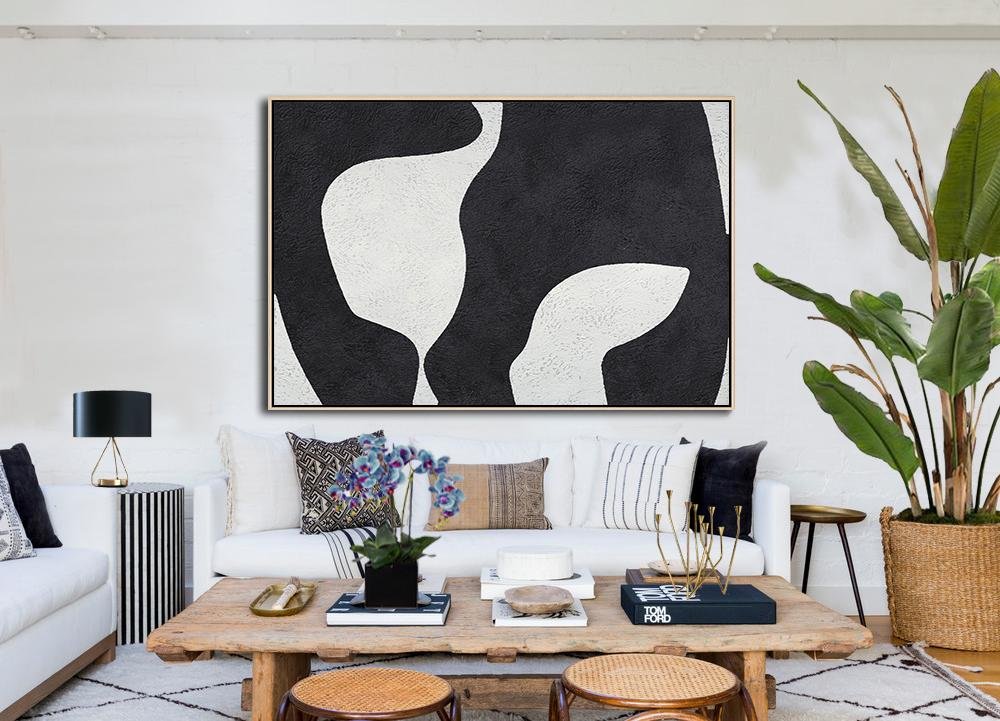Interior design is a dynamic field where trends ebb and flow, much like the changing seasons. Among the trends that have made a remarkable comeback in recent years, the prominent resurgence of wall art stands out as a testament to human creativity. This revival of wall art within the context of interior design has breathed new life into living spaces, turning them into vibrant and personalized environments. Lets delve into the resurgence of wall art in interior design, its historical origins, the diverse forms it takes, its profound influence on contemporary interiors, and the reasons underlying its continued popularity.

Historical Roots of Wall Art in Interior Design
To fully appreciate the resurgence of wall art in interior design, it’s essential to trace its historical roots. Wall art has a rich heritage, serving both aesthetic and functional purposes throughout history. The earliest manifestations of wall art can be found in ancient civilizations like the Egyptians and Greeks, who adorned their walls with intricate frescoes and mosaics. In medieval Europe, tapestries and murals featuring religious and historical narratives graced the interiors of churches and castles.

However, the zenith of wall art was reached during the Renaissance, spanning from the 14th to the 17th centuries. Visionaries like Leonardo da Vinci, Michelangelo, and Raphael created masterpieces that not only adorned walls but also set the stage for modern art. This period emphasized the significance of perspective, proportion, and storytelling in art—a legacy that continues to shape interior design.
The Resurgence of Wall Art in Interior Design
After centuries of design trends that often favoured minimalism and simplicity, the late 20th century witnessed a revival of wall art. Several factors have contributed to this resurgence:
1. Personal Expression: In an era marked by mass production and uniformity, individuals began seeking ways to imbue their living spaces with personal touches. Wall art emerged as a means of expressing one’s unique identity and preferences.
2. Versatility: Wall art encompasses a wide range of forms, from traditional paintings and prints to modern sculptures and textiles. This versatility allows homeowners and designers to select pieces that harmonize with their interior themes and colour palettes.

3. Technological Advancements: Advances in printing technology and digital art have made it easier to create and reproduce high-quality artworks. This accessibility has broadened the appeal of wall art.
4. Historical Inspiration: Interior designers started drawing inspiration from historical periods, such as the Renaissance, as a means of infusing classical beauty and sophistication into contemporary spaces.
Forms of Wall Art in Interior Design:
Wall art in interior design takes various forms, each contributing its distinctive character to a space:
1. Paintings and Prints: Traditional paintings and prints continue to be popular choices for wall art, ranging from classic oil paintings to contemporary abstract prints.
2. Murals: Large-scale murals can utterly transform a room, serving as a visual focal point. They are often featured in commercial spaces and modern homes.

3. Sculptures: Three-dimensional wall sculptures add depth and texture to a room, crafted from materials such as metal, wood, and ceramics.
4. Textiles: Wall hangings and tapestries have made a resurgence, offering a soft, tactile element to walls and creating a cosy ambience.
5. Photography: Photographic prints, especially those capturing landscapes or personal moments, have gained popularity as a choice for wall art in modern interiors.
Impact on Modern Interiors:
The resurgence of wall art has left an indelible mark on contemporary interior design, profoundly impacting spaces in the following ways:
1. Creating Visual Interest: Wall art serves as a magnetic focal point, drawing the observer’s gaze and infusing a room with visual intrigue. It can break the monotony of spaces and add a dash of individuality.
2. Setting the Mood: The selection of wall art plays a pivotal role in shaping the mood and ambience of a room. Bold, vibrant pieces can infuse energy, while serene, muted art can promote relaxation and tranquillity.
3. Defining Style: Wall art serves as a powerful communicator of the chosen design style, whether it leans toward minimalism, maximalism, industrial chic, or classical elegance. It reinforces the aesthetic vision.

4. Enhancing Acoustics: Certain forms of wall art, such as textiles and tapestries, contribute to improved acoustics by dampening sound and reducing echo in a room.
5. Narrating a Story: Wall art can be employed to tell a story or convey a theme within a space, whether through a gallery of cherished family photos or a collection of vintage travel posters.
Enduring Popularity of Wall Art:
The renaissance of wall art in interior design shows no sign of waning. Several factors underpin its enduring popularity:
1. Emotional Connection: Wall art often holds sentimental value, forging an emotional bond with homeowners and residents. People form deep connections with the pieces they choose, ensuring their continued relevance.
2. Adaptability to Trends: Wall art is remarkably adaptable to evolving design trends. Whether interior design leans towards a minimalist aesthetic or embraces maximalist extravagance, there are always pieces that can align with the prevailing style.

3. Artistic Innovation: Artists continually push the boundaries of creativity, resulting in fresh and innovative forms of wall art that captivate the imagination.
4. Personalization: The desire for spaces that reflect individual tastes and experiences remains a driving force behind the popularity of wall art. It allows for the creation of uniquely personalized environments.

The resurgence of wall art in interior design signifies a rekindling of historical traditions and a celebration of human artistic expression. Its adaptability, profound impact on contemporary interiors, and enduring appeal all establish it as an essential element of modern design. As interior design continues to evolve, wall art will undoubtedly remain a cornerstone, providing homeowners and designers with a canvas for boundless creativity and personalization. In a world characterized by constant change, wall art endures as a timeless and powerful testament to the transformative potential of art within living spaces.


